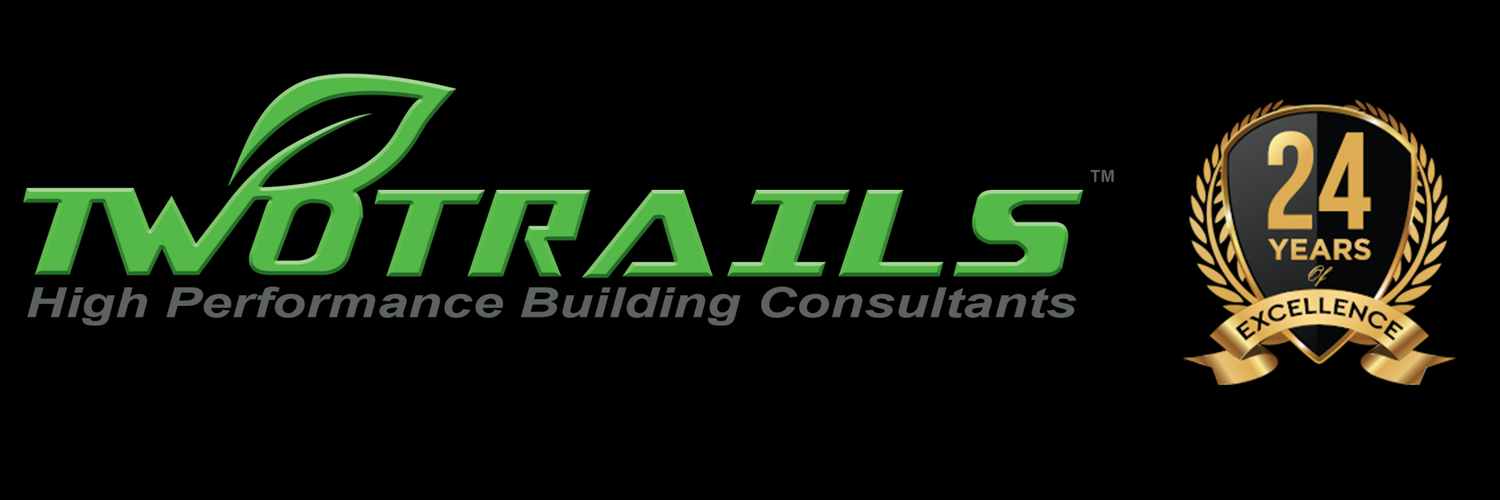Enhanced Commissioning for LEED Projects
Enhanced commissioning for LEED projects provides comprehensive support to ensure that a project aligns with the owner’s requirements for energy, water, indoor environmental quality, and durability throughout design, construction, and operation.
Requirements
To achieve enhanced commissioning, the following activities are required in addition to EA Prerequisite Fundamental Commissioning and Verification:
Commissioning Authority (CxA): The CxA must have documented experience on at least two projects with similar scope, extending from early design through at least 10 months of occupancy. The CxA may be a qualified owner’s employee, an independent consultant, or an impartial subcontractor of the design team.
Good News! Two Trails meets these criteria, making us a reliable partner in fulfilling your project’s enhanced commissioning needs.
Enhanced Systems Commissioning Options
Option 1: Enhanced Systems Commissioning (3-4 Points)
Path 1: Enhanced Commissioning (3 Points)
The commissioning authority must perform the following tasks for mechanical, electrical, plumbing, and renewable energy systems as per ASHRAE Guideline 0-2005 and ASHRAE Guideline 1.1-2007:Review contractor submittals.
Ensure construction documents include requirements for the systems manual and operator/occupant training.
Verify delivery and updates of systems manuals and training effectiveness.
Conduct seasonal testing.
Review building operations 10 months post-completion.
Develop an ongoing commissioning plan.
Document all enhanced commissioning tasks in the Owner’s Project Requirements (OPR) and Basis of Design (BOD).
Path 2: Enhanced and Monitoring-Based Commissioning (4 Points)
In addition to Path 1 requirements, develop monitoring-based procedures to assess energy and water system performance. Include:Defined roles and responsibilities.
Specific measurement requirements and data access points.
Scheduled trend monitoring for key performance indicators.
Action plans for addressing operational conflicts and optimizing energy and water use.
Regular analysis (at least quarterly in the first year) and updates to the systems manual.
Option 2: Envelope Commissioning (2 Points)
Meet EA Prerequisite Fundamental Commissioning requirements, applying them to the building’s thermal envelope along with mechanical and electrical systems.
The commissioning authority must perform tasks outlined in ASHRAE Guideline 0–2005 and NIBS Guideline 3–2012, including:
Reviewing contractor submittals and training requirements.
Verifying systems manual updates, seasonal testing, and occupant training delivery.
Developing an ongoing commissioning plan.
What is Commissioning? & State Code Commissioning
Commissioning is a comprehensive process to ensure that critical building functions operate as intended. Through planning, verification, and risk management, commissioning enhances energy efficiency, indoor air quality, occupant safety, and overall environmental health. This process formalizes review and integration across design, construction, and occupancy, serving as the “baseline of reference” for system performance.
Who Conducts Commissioning?
Typically, an independent third party—referred to as the Commissioning Agent (CA)—is hired by the building owner to represent their interests. The CA may also work under contract to the construction manager or architecture/engineering firms to ensure quality delivery.
Commissioning Phases:
Predesign: The CA establishes commissioning goals with the owner.
Design Phase: The CA defines design requirements, outlines systems to be installed, and creates the commissioning plan.
Construction Phase: The CA conducts site visits, reviews project schedules and submittals, and coordinates functional performance tests.
Acceptance Phase: The CA verifies system performance, oversees corrective measures, and submits the final report.
Post-Acceptance Phase: The CA may provide support in maintaining documentation and recommending system improvements.
Commissioning Cost Benefits
Commissioning typically represents less than 1% of construction costs but can prevent far greater expenses, such as operational inefficiencies, high vacancy rates, and costly post-occupancy corrections. Commissioned buildings operate 8% to 20% more efficiently than those without commissioning.
New Florida Code Requirements
Under the 2014 5th edition of the Florida Building Code, new commercial buildings must undergo third-party commissioning, including:
A commissioning plan by a registered design professional
Mechanical, electrical, and lighting system commissioning
Testing and balancing of air and hydronic systems
Functional performance testing
At Two Trails, our expertise in commissioning ensures smooth compliance and sustainability.
Fundamental Commissioning vs. Enhanced Commissioning
Fundamental Commissioning
Fundamental commissioning ensures that a building’s energy systems are installed, calibrated, and functioning efficiently to meet the Owner’s Project Requirements (OPR) and sustainability goals. This process is led by a Commissioning Authority (CxA), a qualified professional who oversees and manages all aspects of the commissioning process, reporting directly to the project owner.
The CxA is tasked with preparing key commissioning documents, including the Owner’s Project Requirements, Commissioning Plan, Commissioning Specifications, and Commissioning Schedule. They also verify the installation and performance of energy-related systems. At the conclusion of each construction phase, the CxA produces a comprehensive commissioning report summarizing their findings.
Fundamental commissioning typically covers the following energy-related systems:
Heating, Ventilating, Air Conditioning, and Refrigeration (HVAC&R) systems (both mechanical and passive) and their controls
Lighting and daylighting controls
Domestic hot water systems
Renewable energy systems (e.g., solar, wind)
Non-energy-related systems may also be commissioned if project timelines and budgets permit.
Enhanced Commissioning
Enhanced commissioning builds upon the foundation of fundamental commissioning by involving the CxA earlier in the project’s design phase. This proactive approach ensures a more integrated and thorough commissioning process. Additionally, enhanced commissioning requires the CxA to:
Conduct a minimum of one commissioning design review of the Owner’s Project Requirements, Basis of Design, and design documents before the mid-construction documentation phase, ensuring any comments are addressed in subsequent submissions.
Review contractor submittals for compliance with the OPR and Basis of Design alongside the design team and project owner.
Verify end-user training to ensure proper system operations.
Conduct post-occupancy performance verification approximately ten months after project completion.
The CxA also develops a comprehensive Systems Manual, which provides operational staff with the information needed to efficiently operate and maintain the commissioned systems.
Enhanced commissioning ensures a seamless transition from construction to operational excellence, improving system performance and long-term energy efficiency.
